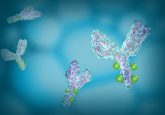New HPLC column launched for advancing high-performance glycan analysis

Thermo Fisher Scientific, Inc., have recently introduced a new high-performance, silica-based HPLC column for glycan separation and analysis.
The Thermo Scientific™ GlycanPac™ AXH-1 column will allow simultaneous separation of glycans by charge, size and polarity and is geared up for high-resolution and -throughput analysis. Furthermore, the column exhibits unique selectivity for biologically important glycans using LC–fluorescence and LC–MS, and can be utilized in studies requiring qualitative, quantitative and structural characterization of uncharged and charged glycans present in biological molecules. The GlycanPac AXH-1 column also provides high chromatographic efficiency and column stability.
“We’re constantly looking for ways to make high performance glycan analysis more accessible and useful to the pharmaceutical community,” explained Chris Pohl, Thermo Scientific Vice President, Chromatography Chemistry. “We feel that this new column succeeds in terms of enhancing quality of results and speed.”
The column allows high-resolution accurate-mass (HRAM) MS of both labeled and native glycans; the latter allows for elimination of the fluorescent labeling step and high throughput. Thermo Fisher Scientific have designed the GlycanPac AXH-1 column to complement their exisitng glycan-analysis products; for example, structural elucidation can be provided by their SimGlycan® software.
Glycan-based studies, often employing MS, are growing in popularity due their potential roles as biomarkers and post-translational modifications of protein biotherapeutics (e.g., monoclonal antibodies). Glycosylation provides structural and functional variation, leading to changes in effectiveness and safety of these therapeutic molecules. It is hoped that the new GlycanPac AXH-1 column will allow such studies to advance further.





